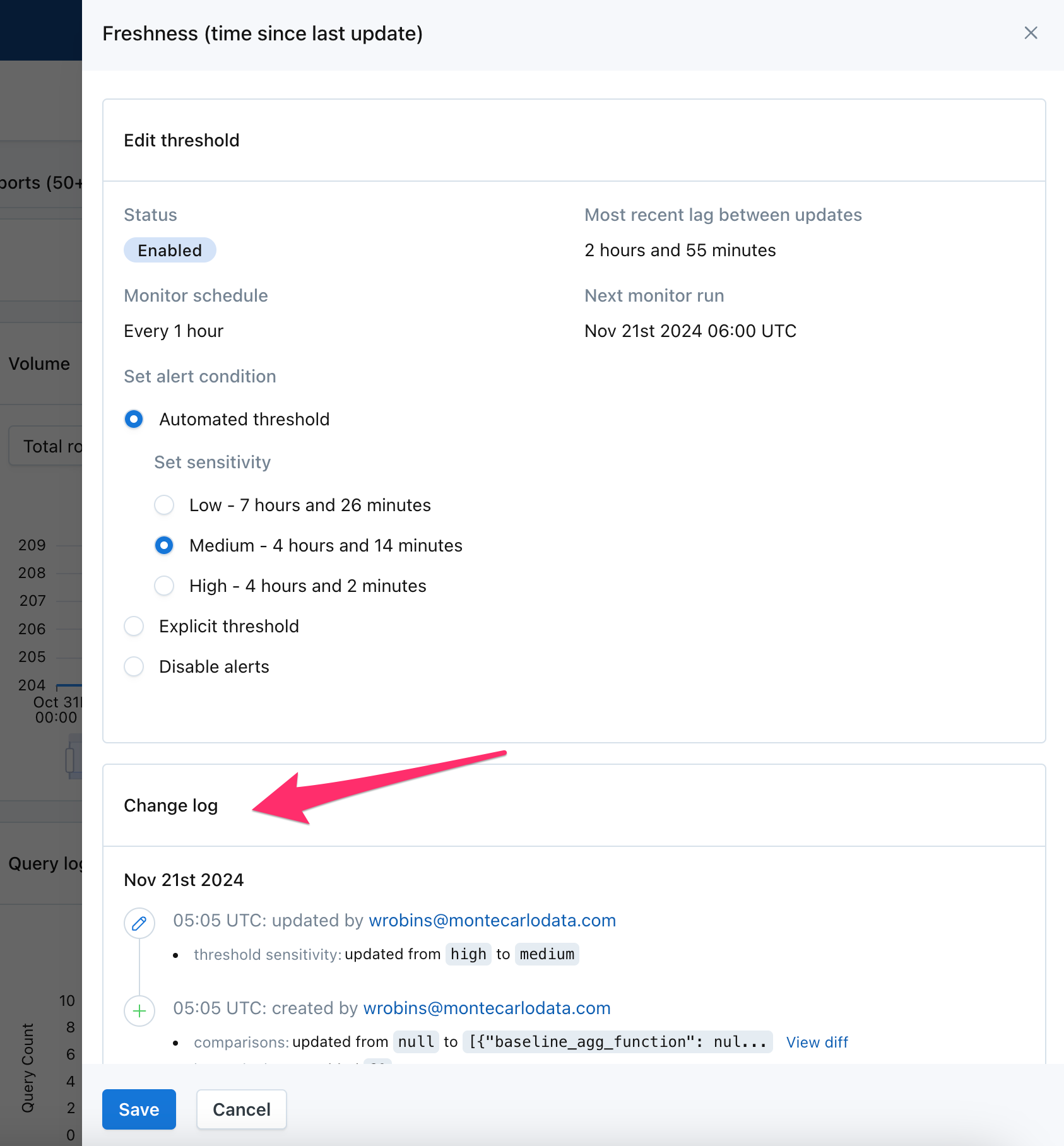MC now supports Databricks oAuth M2M authentication with setup available via the CLI and UI.
Follow docs here to authenticate your MC Service Principal via M2M.

MC now supports Databricks oAuth M2M authentication with setup available via the CLI and UI.
Follow docs here to authenticate your MC Service Principal via M2M.

Next week, the UI of the login page will be refreshed. All functionality, links, and workflows from the login page remain the same. The changes are cosmetic only.

New login page

We are about to remove the two widgets at the top of the monitors page as the information they present appears in other dashboards in the product. This is the first step in our overhaul of the monitor list to improve usability and simplify monitor management workflows.

MC can now manage failures from Databricks Workflows. This helps users triage and resolves all data and system issues in one single platform. Follow docs here to set up the webhook connection to start alerting.
Azure Data Factory pipeline failures can now be managed via MC. This helps users centrally detect, triage and resolve Data Factory pipeline issues along with all other data incidents within MC. Follow docs here to start using.

MC-GitLab integration is now available. Users can leverage the integration to investigate code impact on tables. More details here https://docs.getmontecarlo.com/docs/gitlab


On the Assets page, users interact with our out-of-the-box monitors for Freshness and Volume. It's also where they can configure an explicit threshold, if they prefer that instead of the machine learning.
If a user adjusts sensitivity or switches to an explicit threshold, those changes are now captured in a "Change log" that they can easily view. This makes it easy to see who adjusted the settings, when, and how. This has been a well adopted feature in custom monitors, so we are glad to extend it here as well.

What's new?
Why this change?
We're committed to continuously improving your Monte Carlo experience. This update prioritizes efficiency and actionability, ensuring you can quickly address data issues and gain insights from your data observability platform.
As always, we welcome your feedback! Please don't hesitate to reach out to your customer success manager or support team with any questions or comments.

We’re thrilled to share that Data Profiler (formerly Data Explorer) is now generally available for Snowflake, Databricks, BigQuery, and Redshift. With Monte Carlo’s data profiling and monitor recommendation capabilities, data practitioners can quickly and effectively set up data quality monitoring:

We've expanded the functionality and simplified the experience of managing monitors as code:
alert_conditions and schedule fieldsresource is now warehousecomparisons is now alert_conditionsnotify_rule_run_failure is now notify_run_failure